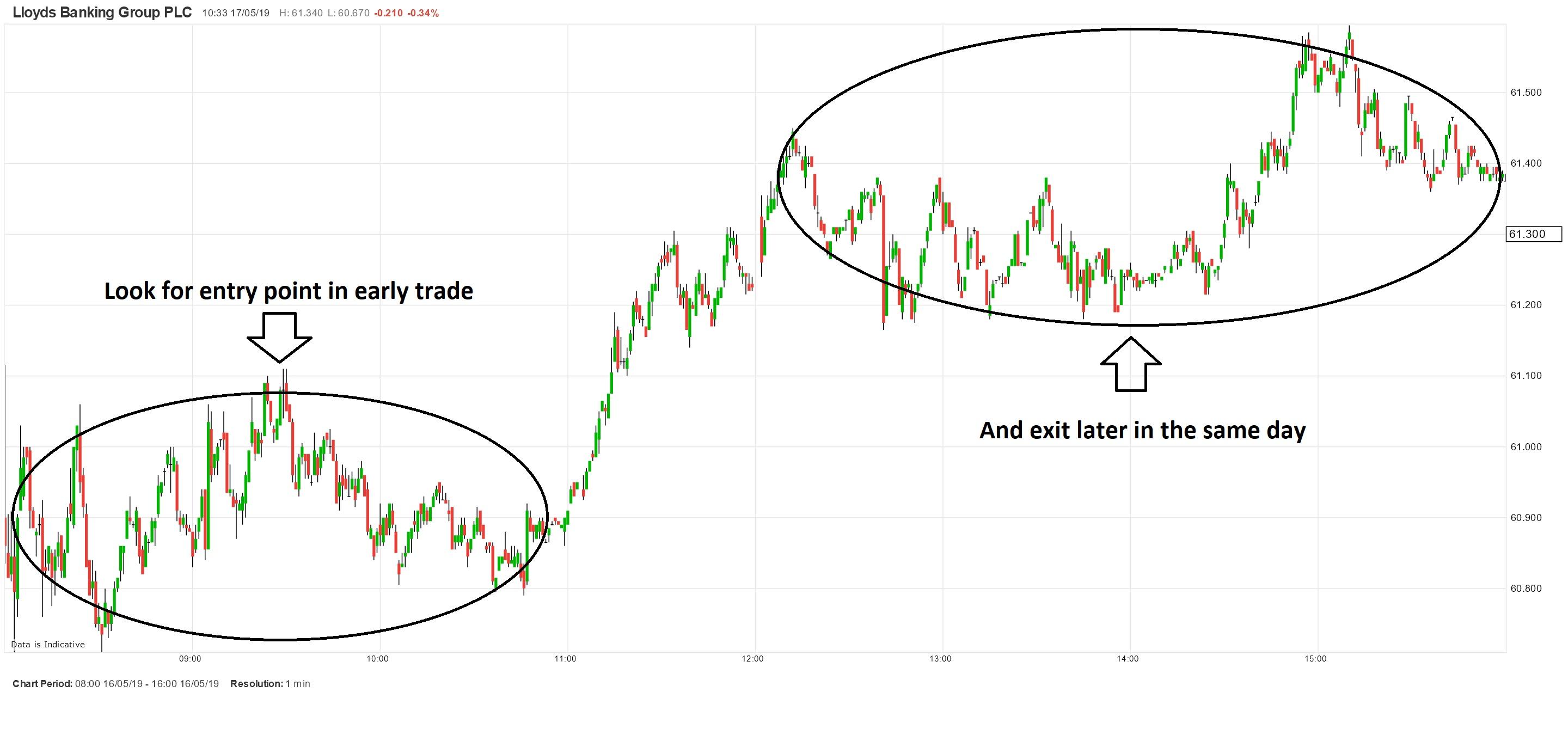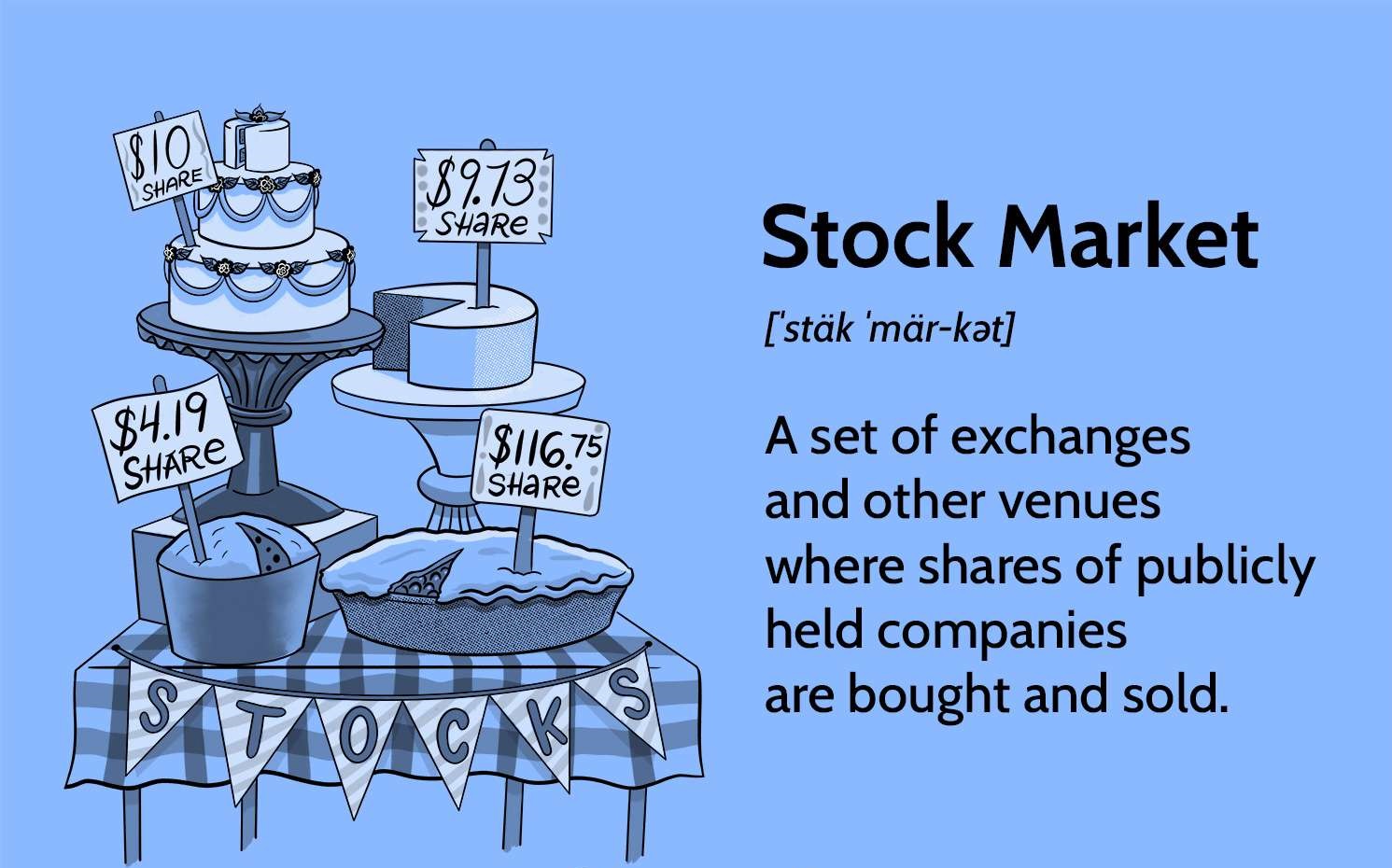Introduction
Option trading is a financial instrument that provides individuals with the opportunity to profit from the movements in the price of underlying assets such as stocks, commodities, or currencies. It is a highly versatile and potentially lucrative form of investment, attracting both professional traders and individual investors looking to diversify their portfolios.
Unlike traditional stock trading, where investors gain or lose money based on the price of the shares they own, option trading allows individuals to speculate on the future price movement of an asset without actually owning the asset itself. This provides flexibility and the potential for significant returns, but it also comes with its inherent risks.
Option trading works on the principle of contracts, where traders enter into agreements to buy or sell a specific asset at a predetermined price within a set time frame. These contracts, known as options, give traders the right, but not the obligation, to execute the purchase or sale of the underlying asset.
There are two types of options: call options and put options. Call options give traders the right to buy an asset, while put options give them the right to sell an asset. The price at which the trader can buy or sell the asset is known as the strike price, and the expiration date specifies the duration within which the option must be exercised.
Option trading offers several benefits. It allows traders to profit from both upward and downward price movements, providing opportunities for profit in any market condition. Additionally, options can be used as a hedging strategy to protect against potential losses in other investments.
However, option trading also comes with its risks. The value of options can fluctuate significantly, and if the market moves against the trader’s position, they may lose their investment. It requires careful analysis, risk management, and understanding of various trading strategies to be successful in option trading.
In this article, we will delve deeper into the workings of option trading, the different types of options, the factors that affect option prices, and the strategies that traders employ to maximize their profits. By gaining a comprehensive understanding of option trading, individuals can make informed decisions and navigate the complexities of this exciting and potentially lucrative investment instrument.
Definition of Option Trading
Option trading is a financial derivative that grants individuals the right, but not the obligation, to buy or sell an underlying asset at a predetermined price within a specified time period. The underlying asset can range from stocks, commodities, currencies, or even indices. Options provide investors with the opportunity to profit from the price movements of these assets without actually owning them.
Options are contracts that are traded on various exchanges, such as the Chicago Board Options Exchange (CBOE) in the United States. These contracts give traders the flexibility to speculate on the price movement of an asset and potentially generate profits, regardless of whether the market is rising or falling.
When individuals engage in option trading, they acquire the right to either buy or sell the underlying asset, depending on the type of option they possess. There are two types of options: call options and put options.
Call options give traders the right to buy the underlying asset at a predetermined price, known as the strike price, before the expiration date. Traders would exercise this option if they anticipate that the price of the asset will rise, allowing them to buy the asset at a lower price than what it is currently trading for in the market.
Put options, on the other hand, provide traders with the right to sell the underlying asset at the strike price before the expiration date. This type of option is typically used when traders predict that the price of the asset will fall, enabling them to sell the asset at a higher price than its current market value.
Option contracts have specific terms, including the expiration date and the strike price. The expiration date determines the timeframe during which the option can be exercised. It is important for traders to carefully consider this date, as the value of the option may decrease as it approaches expiration.
The strike price, also known as the exercise price, is the price at which the option holder can buy or sell the underlying asset. It is crucial to select an appropriate strike price based on market analysis and individual investment goals.
Option trading offers investors the opportunity to diversify their portfolios and profit from market volatility. It allows traders to potentially earn significant returns by leveraging small investments. However, it is important to note that option trading involves risks, and it requires a comprehensive understanding of market dynamics, risk management strategies, and analysis techniques to navigate the complexities of this financial instrument effectively.
How Does Option Trading Work?
Option trading operates on the principle of contracts between two parties: the buyer and the seller. The buyer of an option pays a premium to the seller in exchange for the right, but not the obligation, to buy or sell an underlying asset at a predetermined price within a specified timeframe.
Let’s consider a scenario where an investor believes that the price of a particular stock will rise. Instead of purchasing the stock outright, they can buy a call option. By doing so, the investor gains the right to purchase the stock at a predetermined price, known as the strike price, before the option’s expiration date.
If the stock price does indeed rise above the strike price, the investor can exercise the option by buying the stock at the strike price and then selling it at the higher market price, thus making a profit. However, if the stock price remains below the strike price, the investor has the option to let the contract expire and limit their loss to the premium paid for the option.
The seller, or writer, of an option is obligated to fulfill the terms of the contract if the option buyer decides to exercise their rights. In return, the seller receives the premium paid by the buyer. The seller assumes the risks associated with the option, such as potential losses if the price moves unfavorably.
Option trading involves different strategies that traders can utilize to capitalize on market conditions. These strategies can range from simple, single-option transactions to complex combinations of multiple options, known as option spreads.
One common strategy is known as a covered call, where an investor owns the underlying stock and simultaneously sells a call option on that stock. This strategy allows the investor to generate income from the premium received while potentially benefiting from any moderate price increase in the stock.
Another strategy is buying put options as a form of insurance or protection against potential losses in a stock or portfolio. If the stock price experiences a significant decline, the put option can be exercised, allowing the investor to sell the stock at the strike price, limiting their losses.
Options can also be traded actively in the market, allowing investors to profit from changes in the option’s value without exercising the underlying asset. Traders can buy options at a lower price and sell them when the value increases, generating a profit from the price difference. This approach is known as option speculation.
It is important to note that option trading involves risk and requires careful consideration of factors such as market volatility, time decay, and liquidity. Traders should conduct thorough research, utilize risk management techniques, and understand the potential rewards and drawbacks of different option strategies to make informed decisions.
Overall, option trading provides investors with a flexible and potentially lucrative investment tool to profit from market movements. By understanding the mechanics of option contracts and employing effective trading strategies, individuals can enhance their investment portfolios and potentially achieve their financial goals.
Types of Options
Option trading offers individuals a variety of options to choose from, each catering to different investment goals and market conditions. Understanding the different types of options is crucial for traders to effectively utilize this financial instrument. Let’s explore the two main types of options: call options and put options.
Call Options: Call options give the holder the right, but not the obligation, to buy an underlying asset at a specific price, known as the strike price, within a predetermined time period. Call options are typically purchased when traders believe the price of the underlying asset will rise. If the asset’s price exceeds the strike price before the option expires, the trader can exercise the option and buy the asset at a lower price, thereby profiting from the price difference. However, if the asset’s price remains below the strike price, the trader can let the option expire and limit their loss to the premium paid.
Put Options: Put options, on the other hand, provide the holder with the right, but not the obligation, to sell an underlying asset at a specific strike price within a given timeframe. Traders often purchase put options when they anticipate a decline in the price of the underlying asset. If the asset’s price falls below the strike price, the option can be exercised, allowing the trader to sell the asset at a higher price than its current market value and generate a profit. If the asset’s price remains above the strike price, the put option can expire, and the trader’s loss is limited to the premium paid.
Furthermore, options can also be classified based on their exercise style:
American Options: American options can be exercised at any time before the expiration date. This flexibility provides traders with greater control and allows them to react to favorable market conditions promptly.
European Options: European options can only be exercised at the expiration date. Traders have less flexibility, but the advantage is that the pricing of European options is generally simpler and more transparent than American options.
Understanding the different types of options is essential for traders to align their investment strategies with their market expectations. It is important to evaluate market conditions, analyze price trends, and assess risk levels before choosing the appropriate type of option to trade.
By diversifying their options portfolio and considering a combination of call and put options, traders can create strategies that provide potential profit opportunities in various market scenarios. However, it is crucial to remember that option trading involves risks, and proper risk management techniques should be implemented to protect against potential losses.
Call Options
In option trading, call options are contracts that give the holder the right, but not the obligation, to buy an underlying asset at a specified price, known as the strike price, within a predetermined time period. Call options are typically purchased by traders who anticipate that the price of the underlying asset will rise.
When traders buy a call option, they pay a premium to the option seller for the right to purchase the asset. The premium is based on factors such as the current price of the asset, the strike price, the time to expiration, and market volatility. The premium represents the maximum potential loss for the buyer, as it is the most they can lose if the option expires worthless.
If the price of the underlying asset increases above the strike price before the option’s expiration, call option holders can exercise their right and buy the asset at the strike price. They can then sell the asset at the higher market price, thus profiting from the price difference. The profit made is the current market price minus the strike price, minus the premium paid for the option.
However, if the price of the underlying asset remains below the strike price at expiration, the call option will expire worthless, and the buyer’s loss will be limited to the premium paid. In this case, it may be more advantageous for the buyer to buy the asset directly from the market at the current, lower price rather than exercising the option.
Call options provide traders with a range of opportunities. They can be used to speculate on the price increase of a specific asset, allowing traders to amplify potential gains with a small upfront investment. Additionally, call options can be used as a hedging strategy to protect against potential losses in other investments. By purchasing call options on assets they already own, traders can minimize their downside risk.
It is important to consider various factors when trading call options. These include analyzing the underlying asset’s price movement, evaluating market trends, and assessing the time remaining until expiration. Traders need to strike a balance between the premium paid, the strike price, and the potential profit they expect to make.
Call options provide traders with a flexible and potentially profitable strategy to capitalize on upward price movements in the market. However, it is crucial to note that option trading involves risk, and traders should have a thorough understanding of market dynamics and employ effective risk management techniques to protect against potential losses.
Put Options
In option trading, put options are contracts that give the holder the right, but not the obligation, to sell an underlying asset at a predetermined price, known as the strike price, within a specified timeframe. Put options are commonly used by traders who anticipate that the price of the underlying asset will decline.
When traders purchase a put option, they pay a premium to the option seller in exchange for the right to sell the asset at the strike price. The premium is influenced by factors such as the current price of the asset, the strike price, the time remaining until expiration, and market volatility. This premium represents the maximum potential loss for the buyer if the option expires worthless.
If the price of the underlying asset falls below the strike price before the option’s expiration, put option holders can exercise their right to sell the asset at the strike price. By selling the asset at a higher price than the current market value, the trader can profit from the price difference. The profit earned is the strike price minus the current market price, minus the premium paid for the option.
If the price of the underlying asset remains above the strike price at expiration, the put option will expire worthless, and the buyer’s loss will be limited to the premium paid. In this scenario, it would be more advantageous for the buyer to sell the asset directly in the market at the higher market price rather than exercising the option.
Put options provide traders with several opportunities. They can be used to speculate on the price decline of a specific asset, allowing traders to potentially profit from downward price movements with a small upfront investment. Additionally, put options can serve as a hedging tool to protect against potential losses in other positions. By purchasing put options on assets they own, traders can limit their downside risk.
When trading put options, it is important to consider various factors, including the underlying asset’s price trend, market conditions, and the time remaining until expiration. Traders need to evaluate the premium paid, the strike price chosen, and the potential profit they expect to make.
Put options offer traders a flexible and potentially profitable strategy to capitalize on downward price movements in the market. However, it is essential to remember that option trading involves risk, and proper risk management techniques should be employed to protect against potential losses.
Understanding Option Contracts
Option contracts are the foundation of option trading. They outline the terms and conditions that govern the rights and obligations of the buyer and seller. Understanding the key elements of option contracts is crucial for traders looking to engage in option trading.
An option contract consists of several components:
Underlying Asset: The underlying asset is the financial instrument on which the option contract is based. It can be a stock, commodity, currency, or other types of assets. The price and value of the option contract are derived from the underlying asset.
Strike Price: The strike price, also known as the exercise price, is the predetermined price at which the underlying asset can be bought or sold. The strike price is an essential element of the contract as it determines the potential profitability of the option.
Expiration Date: The expiration date is the date on which the option contract expires. After this date, the option becomes invalid, and the buyer no longer has the right to exercise it. Traders must consider the expiration date when selecting options and assess the timeframe within which they expect the underlying asset’s price to move.
Premium: The premium is the price paid by the buyer to the seller for the rights associated with the option contract. It is influenced by various factors, including the volatility of the underlying asset, the time remaining until expiration, and market conditions. The premium represents the maximum potential loss for the buyer if the option expires worthless.
Option contracts can be further classified based on the style of exercise:
American Options: American options can be exercised at any time prior to the expiration date. This flexibility allows traders to take advantage of favorable market conditions and manage risk more effectively.
European Options: European options can only be exercised at the expiration date. While they offer less flexibility compared to American options, they are typically easier to price and analyze.
Option contracts offer traders the opportunity to speculate on price movements, hedge against potential losses, and diversify their portfolios. By understanding the terms and components of option contracts, traders can make informed decisions and effectively utilize strategies based on their investment objectives and risk tolerance.
It is important to note that option contracts involve risks, and traders should carefully assess the factors that may affect the value and profitability of the contracts. This includes analyzing market conditions, evaluating the underlying asset’s potential future performance, and implementing risk management strategies to protect against adverse market movements.
Buying and Selling Options
Option trading provides individuals with the flexibility to both buy and sell options, allowing traders to take advantage of various market conditions and investment strategies. Understanding the process of buying and selling options is crucial for navigating the dynamic world of option trading.
Buying Options: When buying options, traders pay a premium to acquire the rights associated with the option contract. By purchasing call options, traders speculate on the price increase of the underlying asset, while buying put options allows them to profit from price decreases. The premium paid represents the maximum potential loss for the buyer if the option expires worthless. Traders must evaluate various factors, such as the underlying asset’s price trend, time to expiration, and market volatility, to make informed decisions when buying options.
Selling Options: Selling options involves acting as the option writer or the party that grants the rights associated with the option contract. As the seller, traders receive the premium from the buyer. Writing call options obligates the seller to potentially sell the underlying asset if the option is exercised, while writing put options requires the seller to potentially buy the underlying asset. Sellers must carefully consider their risk tolerance, market expectations, and potential obligations when selling options.
Both buying and selling options offer unique opportunities and strategies in option trading. Buying options provides traders with the ability to profit from market movements with a limited upfront investment. It allows for flexibility and the potential for substantial returns if the market moves in the anticipated direction. However, it is important to note that the buyer’s risk is limited to the premium paid for the option.
Selling options, on the other hand, can provide traders with income through the premiums received. It allows traders to take advantage of time decay, as options lose value as they approach expiration. However, sellers bear the risk of potential obligations if the options are exercised, and their potential losses can be significant if the market moves adversely.
When buying or selling options, traders should take into account their investment objectives, risk tolerance, and market analysis. They should consider the underlying asset’s fundamentals, technical analysis, and volatility to determine the most suitable options strategies.
It is crucial for traders to have a thorough understanding of option pricing, contract terms, and the potential risks and rewards associated with buying and selling options. Implementation of risk management strategies, such as setting stop-loss orders and diversifying options portfolios, is imperative to manage potential losses and protect against unfavorable market conditions.
By carefully selecting options and employing appropriate strategies, traders can optimize their profit potential and effectively navigate the complexities of buying and selling options in the dynamic options market.
Factors Affecting Option Prices
Option prices are influenced by various factors, understanding which is crucial for traders to make informed decisions and effectively analyze the potential profitability of their option trades. The following are key factors that impact option prices:
Underlying Asset Price: The price of the underlying asset has a significant influence on option prices. Call options become more valuable as the price of the underlying asset rises, as it provides the opportunity for the option holder to buy the asset at a lower price and sell it at a higher market price. Conversely, put options become more valuable as the price of the underlying asset falls, as it allows the option holder to sell the asset at a higher price than its current market value.
Strike Price: The relationship between the strike price and the current market price of the underlying asset is crucial in determining option prices. Call options with lower strike prices will generally have higher premiums compared to those with higher strike prices, as they are closer to being “in-the-money” and offer a greater chance of profit. Conversely, put options with higher strike prices tend to have higher premiums since they provide a larger potential profit if the price of the underlying asset declines below the strike price.
Time to Expiration: The time remaining until the option’s expiration date plays a significant role in option prices. As time passes, the value of an option declines due to the concept of time decay. Options with longer durations have higher premiums, as they have more time for the underlying asset’s price to move in a favorable direction. Traders must carefully consider the time remaining until expiration and its impact on option prices when assessing potential trade opportunities.
Implied Volatility: Implied volatility refers to the market’s expectation of the underlying asset’s future price volatility. Higher levels of implied volatility lead to higher option premiums, as there is a greater likelihood of significant price swings in the underlying asset. Conversely, lower levels of implied volatility result in lower premiums. Traders must consider implied volatility when assessing the potential profitability of their option trades.
Risk-Free Interest Rate: The risk-free interest rate, such as the prevailing government bond yield, also affects option prices. A higher interest rate will generally increase option premiums, as it provides the opportunity cost of holding the underlying asset versus investing in risk-free assets.
It is important to note that the interplay of these factors can vary depending on the specific options strategy employed. Traders must consider them collectively to assess the potential risks and rewards associated with their option trades. Additionally, market supply and demand dynamics and external events such as economic releases or geopolitical developments can also impact option prices.
Option pricing models, such as the Black-Scholes model, attempt to mathematically calculate the fair value of options by considering these factors. However, options market prices also reflect market sentiment and expectations, which may deviate from model-derived values.
Overall, a comprehensive understanding of the factors affecting option prices is essential for traders to optimize their trading strategies and make informed decisions. By considering the interplay of these factors and staying informed about market conditions, traders can effectively assess potential risk-reward profiles and enhance their chances of success in option trading.
Benefits of Option Trading
Option trading offers individuals a range of benefits, making it an attractive investment tool for both professional traders and individual investors. Understanding the advantages of option trading can help traders capitalize on market opportunities and diversify their investment portfolios. The following are key benefits of option trading:
Profitability in Any Market Condition: One significant advantage of option trading is the ability to profit from both rising and falling markets. Call options provide opportunities for profit when the price of the underlying asset increases, while put options allow for potential gains when the price of the underlying asset decreases. This versatility allows traders to adapt to various market conditions and seize profit opportunities regardless of market direction.
Leverage: Option trading enables traders to control a large amount of the underlying asset with relatively small upfront investments, thanks to the leverage provided by options. By purchasing options, traders gain exposure to the price movement of the underlying asset without the need to invest the full value of the asset. This leverage amplifies potential returns, allowing traders to generate higher profits compared to investing directly in the underlying asset.
Hedging and Risk Management: Options serve as effective risk management tools. They allow traders to hedge their existing positions by purchasing options that counterbalance potential losses in other investments. For example, buying put options can offer protection against a decline in a stock’s value. This hedging strategy helps limit potential losses and provides peace of mind to traders, especially during turbulent market conditions.
Flexibility and Customization: Option trading provides unparalleled flexibility and customization. Traders can design their option strategies based on their specific investment goals, risk tolerance, and market outlook. Options allow for combinations and permutations, such as options spreads and multi-leg strategies, providing an extensive range of possibilities to tailor the trading approach to individual preferences.
Portfolio Diversification: Option trading offers an opportunity to diversify investment portfolios. By incorporating options alongside traditional investments, such as stocks or bonds, traders can spread their risk and potentially enhance overall portfolio performance. Options can provide unique return patterns and reduce correlations with other asset classes.
Income Generation: Option trading can be a source of income. By selling options, traders can collect premiums, serving as an additional revenue stream. Strategies like covered calls involve selling call options against underlying stocks to generate income from the premiums received. This income can supplement investment returns and potentially increase overall profitability.
It is crucial to note that while option trading offers numerous benefits, it also involves risks. Proper understanding of option strategies, risk management techniques, and market analysis is essential for successful trading. Traders should continuously educate themselves and stay updated on market trends to maximize the benefits of option trading.
By leveraging the advantages of option trading, individuals can enhance their trading capabilities, improve portfolio performance, and potentially achieve their financial goals.
Risks of Option Trading
While option trading offers various benefits and opportunities, it is important to understand the risks involved. Traders should carefully consider these risks and employ effective risk management strategies to protect their investments. The following are key risks associated with option trading:
Limited Time Horizon: Option contracts have expiration dates, which impose a time constraint on traders. As the expiration date approaches, the value of the option may decrease, leading to potential losses. Traders must accurately predict the market movement within the given timeframe and carefully manage their positions to avoid the negative impact of time decay.
Market Volatility: Options are sensitive to changes in market volatility. Increased volatility can significantly impact option prices. Higher volatility can lead to wider bid-ask spreads and potentially increased premiums, making it more expensive for traders to enter or exit positions. Traders should consider market volatility and adjust their strategies accordingly to manage potential risks.
Potential Loss of Premium: When buying options, the premium paid is at risk and represents the maximum potential loss if the option expires worthless. Traders must carefully assess the potential return on investment relative to the risk they are taking. It is crucial to consider risk-reward ratios and not overexpose capital to individual trades.
Complexity: Option trading involves complexities and requires a solid understanding of option strategies and market dynamics. Lack of knowledge and experience can lead to costly mistakes. Traders should educate themselves, engage in thorough research, and practice with smaller positions before venturing into more complex option strategies.
Unpredictable Market Events: Unexpected market events can cause significant price movements, affecting option values. Economic releases, geopolitical developments, or corporate announcements can lead to swift and significant changes in the underlying asset’s price, resulting in potential losses for option traders. Risk management techniques, such as setting stop-loss orders or diversifying positions, can help mitigate the impact of unpredictable events.
Leverage and Magnified Losses: While leverage can amplify profits, it can also magnify losses. Options allow investors to control a larger position with a fraction of the capital required to purchase the underlying asset. However, adverse market movements can result in substantial losses. Traders should be cautious when employing leverage and ensure they have a clear risk management plan in place.
Illiquidity: Certain options may have lower levels of liquidity, making it challenging to enter or exit positions at desired prices. Low liquidity can result in wider bid-ask spreads and potential difficulties in executing trades. Traders should be cautious when trading illiquid options and closely monitor their positions to avoid unfavorable execution prices.
Managing risks is an integral part of successful option trading. Traders should educate themselves, carefully assess risk-reward profiles, utilize risk management techniques, and continuously monitor and adjust their positions based on market conditions. By understanding the risks and having a disciplined approach, traders can navigate the complexities of option trading and increase their chances of achieving profitable outcomes.
Strategies for Option Trading
Option trading offers a wide array of strategies that traders can utilize to optimize their investment outcomes and manage risk effectively. By employing these strategies, traders can capitalize on market opportunities and adjust their positions based on their outlook and risk appetite. The following are some popular strategies for option trading:
Long Call: This strategy involves buying call options when anticipating a rise in the price of the underlying asset. Traders purchase call options to profit from the potential upside movement, while limiting their downside risk to the premium paid.
Long Put: The long put strategy is employed when traders expect the price of the underlying asset to decrease. By buying put options, traders can profit from downward price movements and limit their maximum potential loss to the premium paid.
Covered Call: In a covered call strategy, traders simultaneously hold a long position in the underlying asset and sell call options against it. This strategy generates income from the premiums received, while potentially allowing the trader to profit from moderate price increases in the underlying asset.
Protective Put: This strategy, also known as a married put, involves buying put options as insurance against potential losses in an existing long position. By acquiring put options, traders can limit their downside risk and protect their investment in case of adverse price movements.
Vertical Spreads: Vertical spreads involve buying and selling options with different strike prices within the same expiration period. Examples include bull call spreads and bear put spreads. These strategies allow traders to potentially profit from a limited price range while reducing the overall cost and risk of the position.
Straddles and Strangles: Straddle involves simultaneously buying both a call and put option with the same strike price and expiration. Strangle employs the same concept, but with different strike prices. These strategies are used when expecting significant price volatility in the underlying asset, allowing traders to profit regardless of the direction of the price movement.
Butterfly Spreads: Butterfly spreads involve combining multiple options contracts with different strike prices to create a position that benefits from minimal price movement. This strategy is employed when traders expect the underlying asset’s price to remain within a tight range.
Calendar Spreads: Calendar spreads, also known as time spreads, involve buying and selling options with the same strike price but different expiration dates. The goal of this strategy is to profit from the differences in time decay between the two options.
These are just a few examples of the various option trading strategies available. Each strategy has its own risk-reward profile and suitability for different market conditions. It is crucial for traders to thoroughly understand each strategy, including potential costs, risks, and market scenarios in which they are most effective.
Successful option trading requires careful consideration of market conditions, thorough analysis of the underlying asset, and ongoing evaluation of risk exposure. Traders should continuously educate themselves, practice with smaller positions, and implement sound risk management techniques to optimize their option trading strategies.
Conclusion
Option trading is a versatile and potentially lucrative investment instrument that allows individuals to profit from the price movements of underlying assets. By understanding the fundamentals of option trading, the different types of options, and the factors that affect option prices, traders can navigate the complexities of the options market and make informed decisions.
Option trading offers numerous benefits, such as the ability to profit in any market condition, leverage, risk management capabilities, flexibility, portfolio diversification, and income generation. Traders can capitalize on market opportunities, protect against potential losses, and tailor their strategies to suit their investment goals and risk preferences.
However, option trading also carries inherent risks that traders should be aware of. These risks include limited time horizons, market volatility, potential loss of premiums, complexities, unpredictable market events, leverage, and issues related to liquidity. Traders must develop a solid understanding of these risks and employ effective risk management techniques to protect their investments.
To optimize their option trading endeavors, traders should consider various strategies such as long calls, long puts, covered calls, protective puts, spreads, straddles, and more. Each strategy has its own risk-reward profile and suitability for different market conditions, and it is crucial for traders to carefully analyze and select appropriate strategies based on their investment objectives.
In conclusion, option trading can be a valuable addition to an investor’s toolkit, offering opportunities for profit, hedging, and portfolio diversification. However, it requires thorough research, continuous learning, and a disciplined approach to manage risks effectively. By staying informed, understanding the intricacies of option contracts, and implementing sound trading strategies, individuals can navigate the dynamic options market and potentially achieve their financial goals.

























